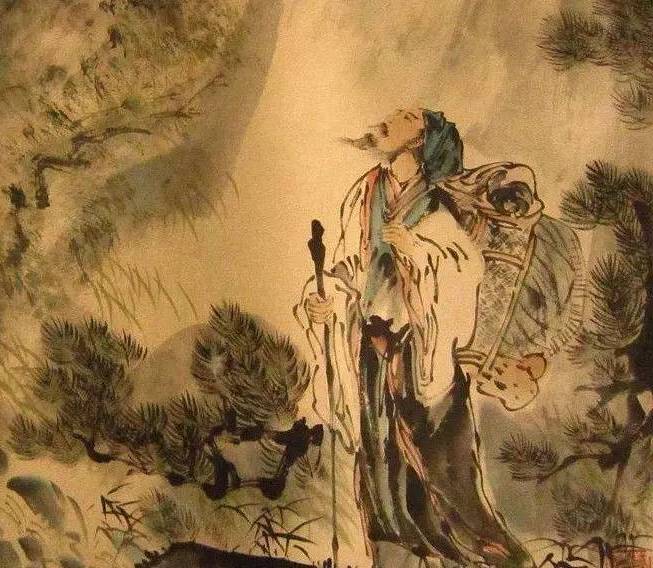This Week in China’s History: May 19, 1613
In much of the world, summer is just around the corner, as schools let out and the weather warms. For many, this means opportunities for travel (let us not take this for granted, after the disruptions of the pandemic). With that in mind, it seems an appropriate moment to look back to China’s first, most famous, and most prolific travel writer.
“[May 19, 1613]: Left [Ningbo] through the West Gate. The clouds had dispersed and the sun was shining brightly. My mood appeared joyful along with the mountain’s glow. After ten miles, reached Guardian Liang’s Mountain. Heard that tigers were stalking the roads hereabout and had injured several tens of people in a month. Therefore, I decided to spend the night here.”
These words, as translated by Richard Strassberg in his book Inscribed Landscapes, mark the beginning of the journeys of Xú Xiákè 徐霞客. For more than 30 years, Xu traveled across China, visiting 16 modern provinces and covering untold miles. His diaries fill some 1,100 pages in modern transcription — 600,000 characters — and that doesn’t even count the entries that didn’t survive.
Leisure travel is a hobby that requires privilege, and Xu Xiake fit that bill. Born in 1587 in Jiangsu province (with the name Xú Hóngzǔ 徐宏祖), his family was one of means, with a literary tradition dating back to at least the Song dynasty. But although the family was educated, they were not in government service, as might be expected of a family of this background. The Xus seem to have eschewed politics and government, having fled south with the fall of the Song and, as Strassberg relates, “preferring to lead leisurely, comfortable lives as local gentry on their estates.”
Xu’s biographers record that both of his parents — Xú Yù’ān 徐豫庵 and Wáng Rúrén 王孺人 — were avid readers and book collectors. This might have pointed toward the civil service examinations and a career in the bureaucracy, but influenced by his father’s contempt for government and his mother’s encouragement of curiosity, Xu Xiake took, literally, a different path. He never even studied for the examinations, choosing instead to personally visit the many places he had read about.
Xu Xiake’s journeys are noteworthy for reasons far beyond the romance of his travels. Traveling with a servant, Gù Xíng 顧行, Xu wrote in his journal nearly every day. His journals “capture the reality of travel more than other writers had,” as Strassberg observes, “even to the point of noting the food consumed and the condition of his lodgings.” This, along with detailed itineraries that could be followed generations later, made his writings a late-imperial Lonely Planet guide.
His longest journey was one of his last: four years traveling in southwest China, including Yunnan, Guizhou, Guangxi, and Sichuan. Although he had always included observations on the natural world and local phenomena, it was during this last journey that he focused especially on geology, flora, and fauna. Besides a travel guide, Xu’s writings became a valuable source for scientific observation and surveying, giving him a place in Joseph Needham’s Science and Civilization in China. He climbed into the Himalayan front ranges to discern the headwaters of great rivers, including the Yangtze, Mekong, and Salween.
It appears that Xu intended to edit his collected writings for publication, distilling down the hundreds of thousands of characters to something more digestible. He never had the chance, falling ill — probably with malaria — during his last journey. He never fully recovered and died in 1642, aged just 55. His sudden death made his work even more valuable because it was then published unedited, providing a rare informal record from the Ming era. Xu’s diaries “were not polished literary pieces intended for publication in their original form,” Strassberg writes. The lack of editing gave the diaries a “spontaneous, unfinished form. Lacking a commemorative occasion or a moralistic intent, they present a relatively objective, unmediated vision of the world” and “capture the reality of travel more than other writers had.”
I’ll close with a passage, translated by Strassberg, of one of Xu’s first journeys. Maybe it’s just my love of azaleas, but it seems to embody the love of travel that defines Xu Xiake:
[May 20]: It rained in the morning. Traveled five miles, and came upon a fork in the road. Our horses headed west toward Terrace Mountain, and the sky gradually cleared. Another three miles and we arrived at Pine Gate Ridge. The mountain became steep and the road slippery, so we dismounted and proceeded on foot…Now the road began to wind around as we ascended along the spine of the mountain. Meanwhile, it had cleared after the rain so that the sound of springs and the colors of the mountains were transformed all over. The azaleas blazed forth among the emerald growth, making me forget about the difficulty of the climb.
This Week in China’s History is a weekly column.






